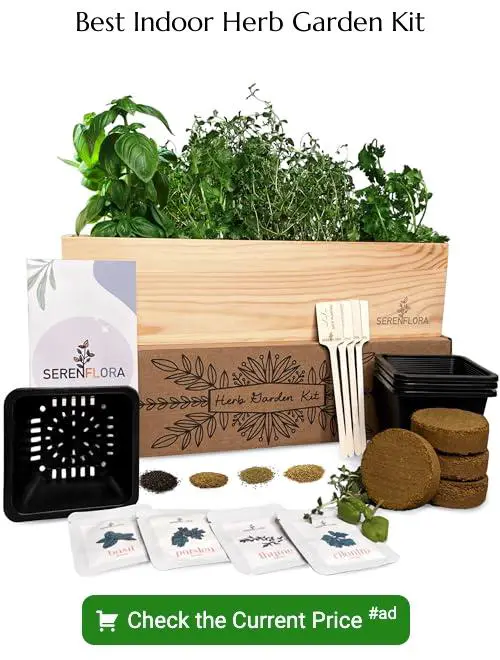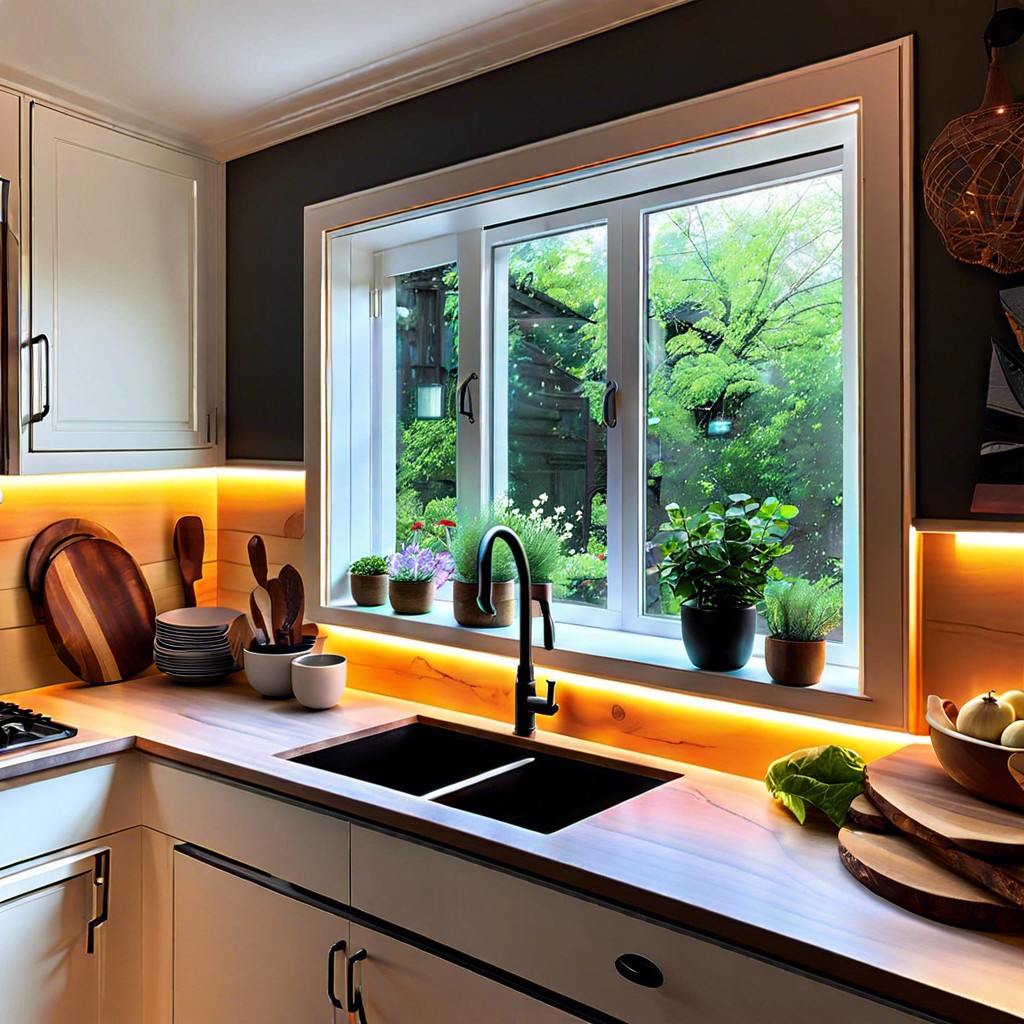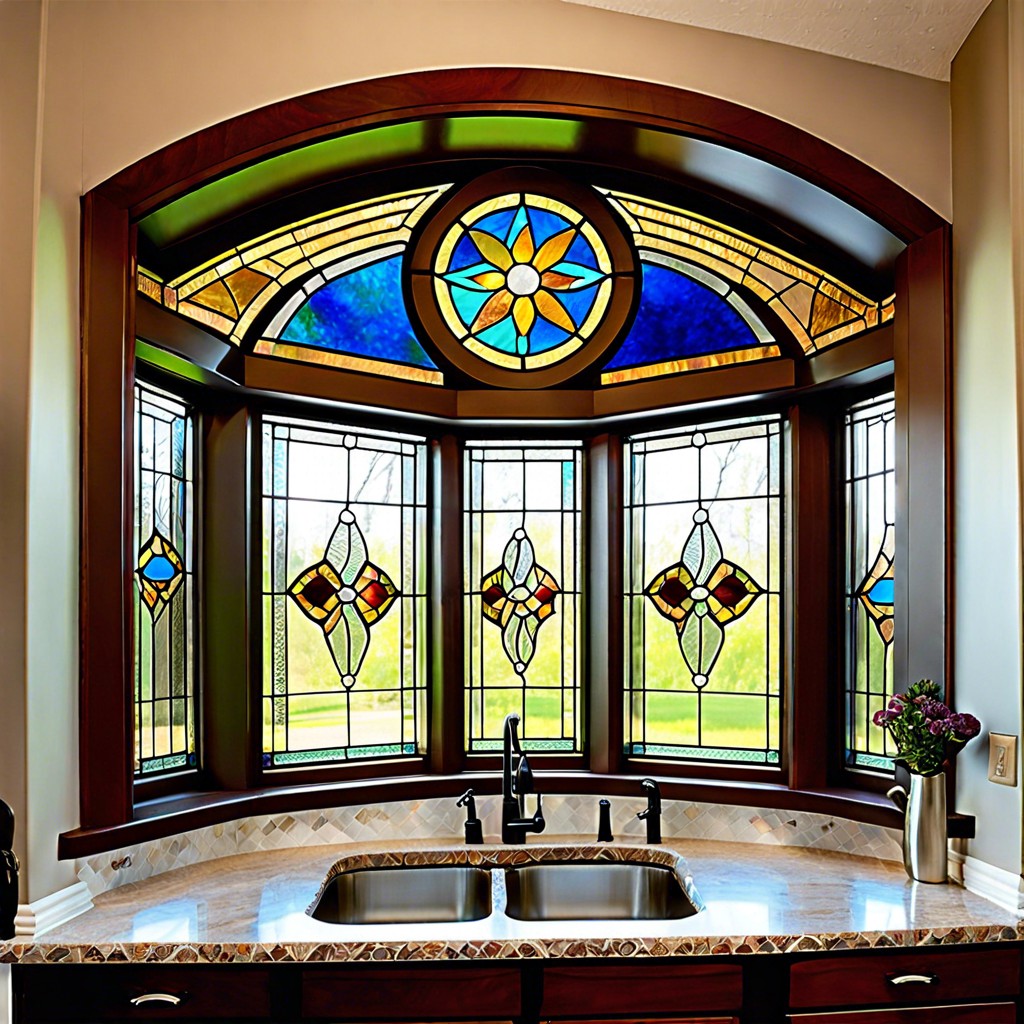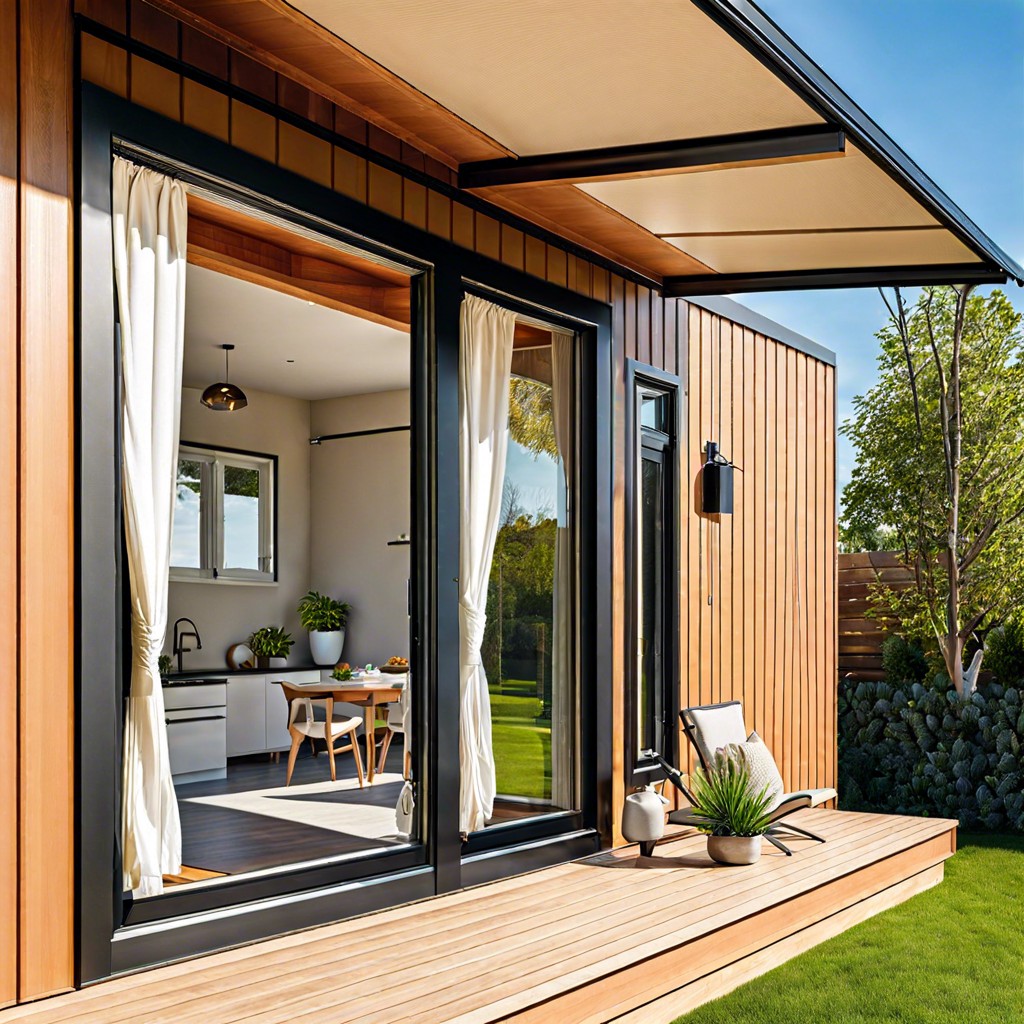In this guide, you’ll learn how to transform your kitchen window into a thriving herb garden, optimizing space while adding both aesthetic appeal and functionality to your home.
DIY Vertical Herb Garden Near Your Kitchen Window
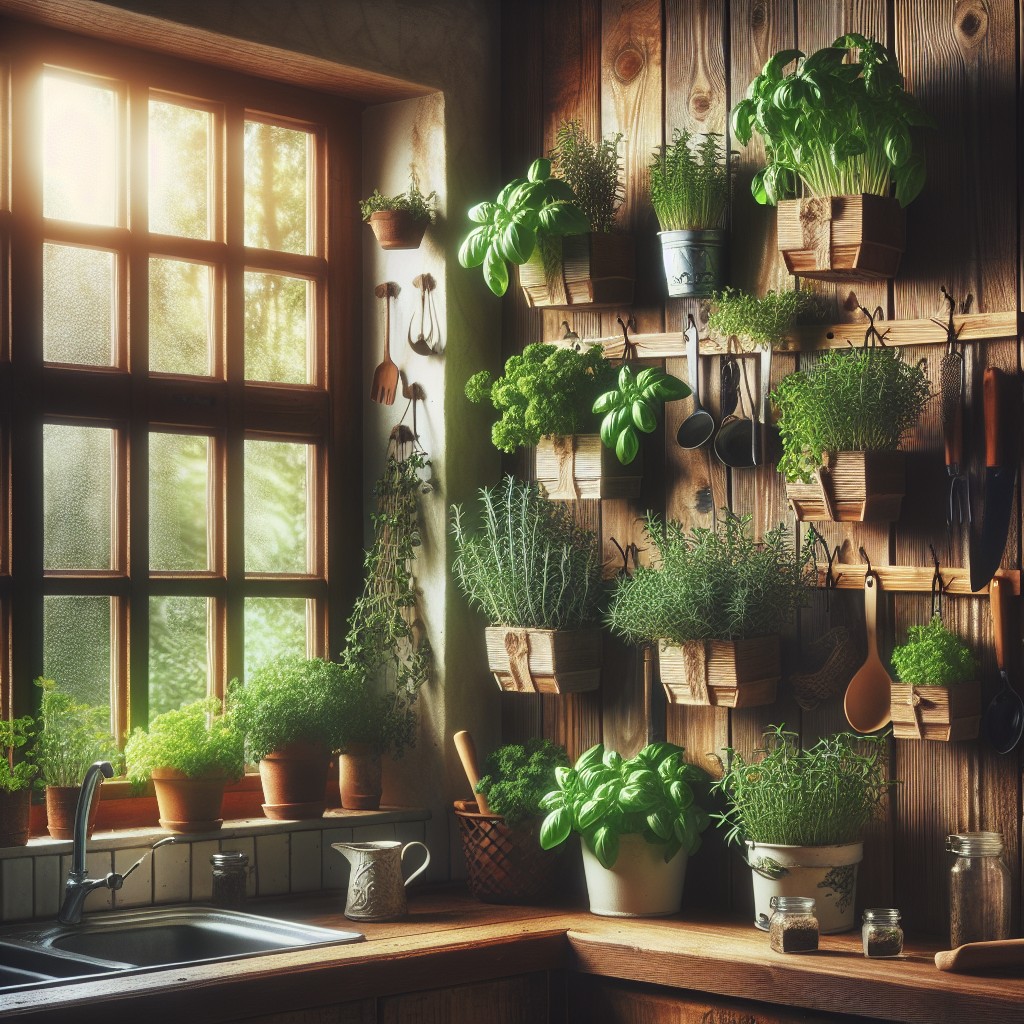
Maximize vertical space by affixing modular planters on a wall or over-the-sink shelf, creating tiers for different herbs.
This setup allows you to cultivate a variety of herbs in a limited footprint, perfect for small kitchens.
With easy access and at eye level, maintenance and harvesting are convenient, enhancing both cooking and kitchen ambiance.
Using Hanging Baskets for Windowsill Herb Garden
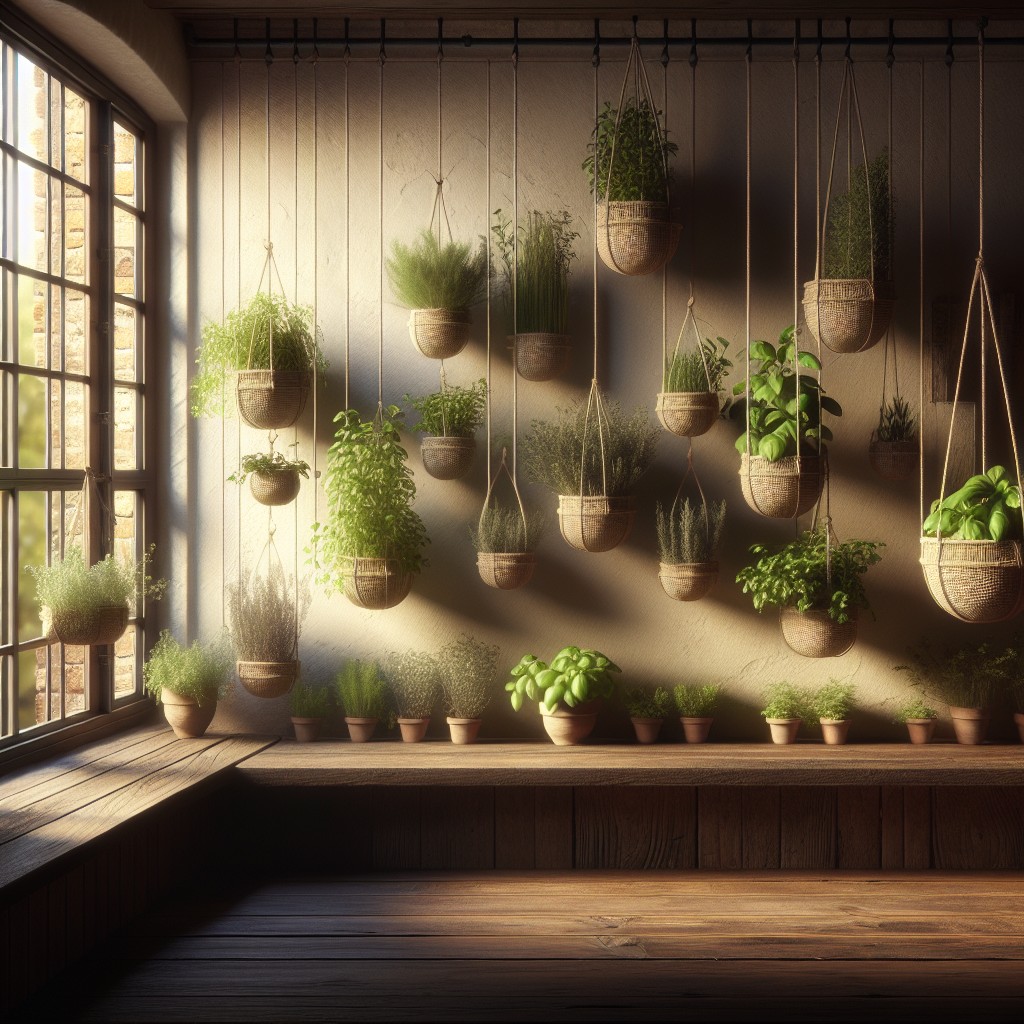
Hanging baskets maximize vertical space, allowing for a lush array of herbs without cluttering the windowsill. These baskets provide ample airflow around the plants, promoting healthy growth and reducing the risk of fungal diseases. They also offer the convenience of easy access for snipping fresh herbs while cooking, enhancing culinary efficiency and pleasure.
Self-Watering Pots for Your Herb Garden
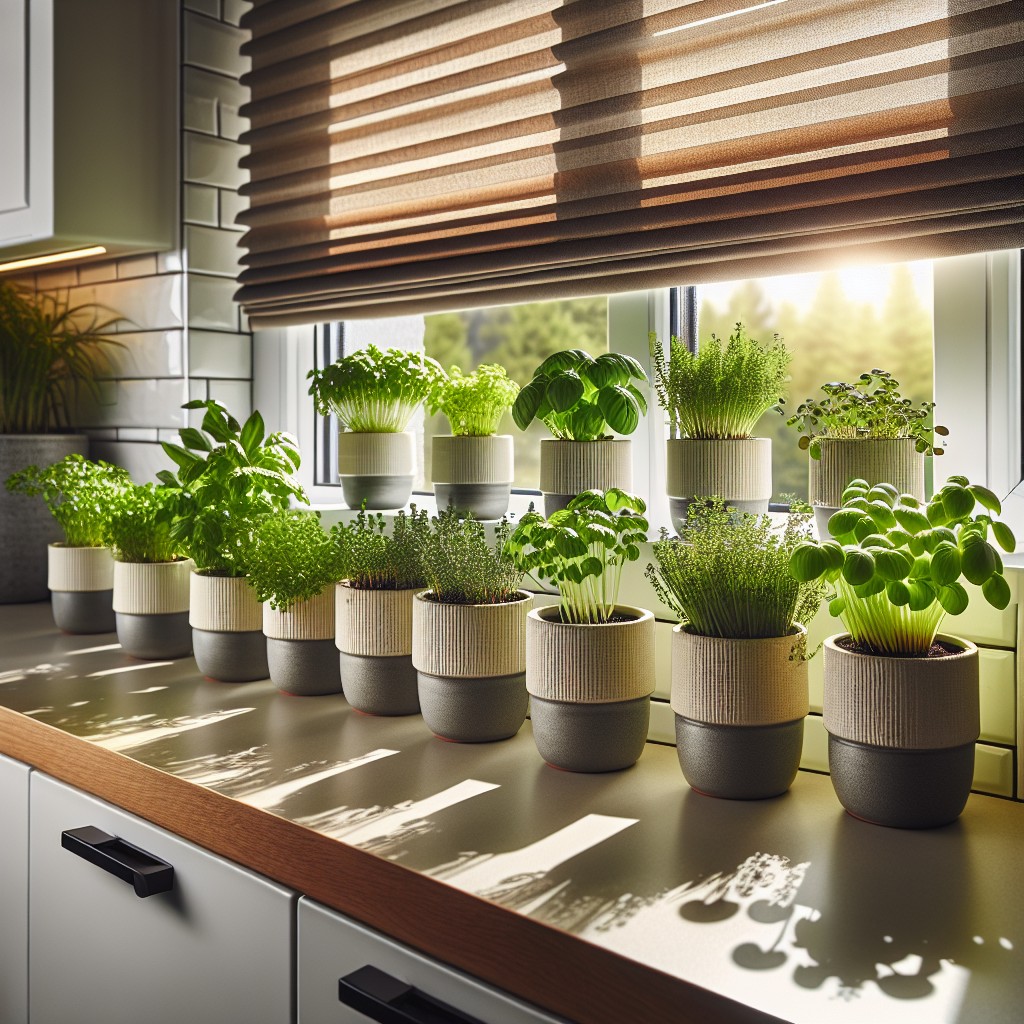
Self-watering pots maintain consistent moisture levels critical for herb vitality, ensuring your kitchen herbs are neither overwatered nor parched.
These containers can be lifesavers for busy individuals, offering a low-maintenance solution for growing herbs indoors.
With a built-in reservoir, they provide a steady water supply directly to the roots, promoting healthy plant growth.
Repurposing Old Bottles As Herb Planters
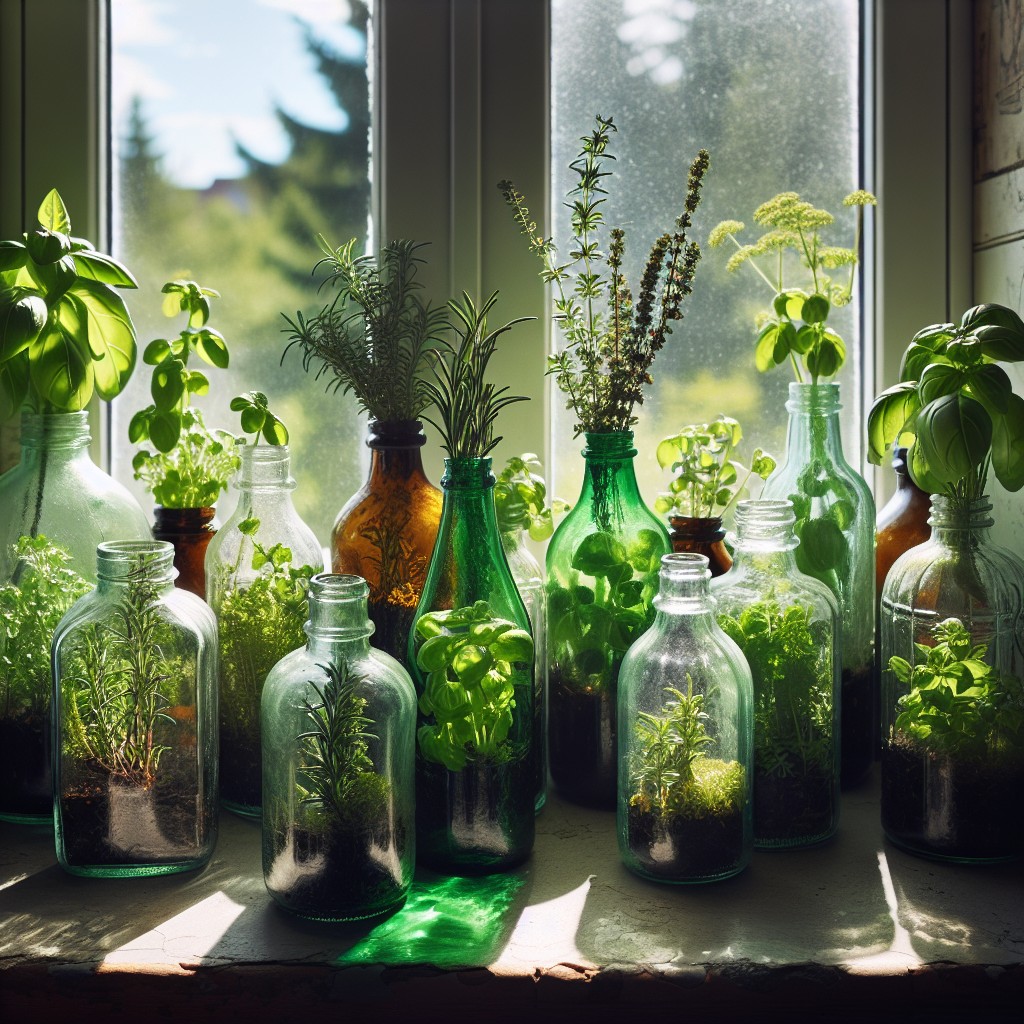
Repurposed old bottles serve as compact, eco-friendly herb planters that fit snugly on narrow windowsills. They offer a visually appealing way to have fresh herbs at hand while reducing waste.
The clear glass also allows for monitoring root growth and soil moisture levels easily.
Arranging Herbs for Optimal Sunlight Exposure
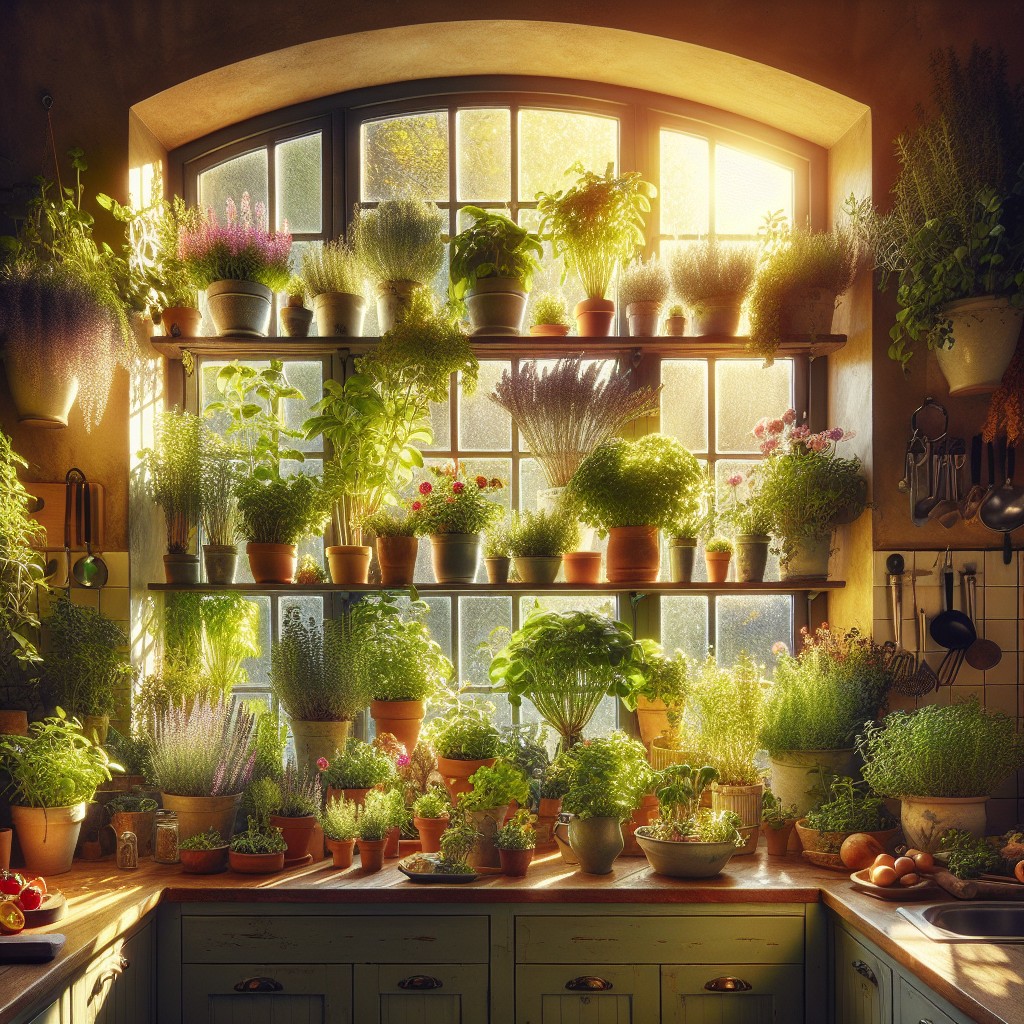
Place herbs with the highest sunlight demands, such as basil and thyme, closest to the window pane, maximizing their exposure throughout the day.
Arrange less sun-thirsty herbs, like parsley and mint, further back on the sill, ensuring they receive indirect light without overshadowing.
Rotating the plants regularly promotes even growth and prevents leaning, keeping the foliage full and healthy.
Growing Rare Herbs in a Windowsill Garden

Cultivating rare herbs, such as lemon verbena or sweet cicely, on your kitchen windowsill adds an exotic touch and expands your culinary palette.
These unique varieties not only elevate the flavor profile of dishes but also serve as conversation starters due to their uncommon appearance and uses.
Integrating them into your indoor garden produces a visually stunning array while ensuring fresh, distinctive ingredients are at hand for adventurous cooking.
Use of Compact Herb Plants for Limited Space Windowsills
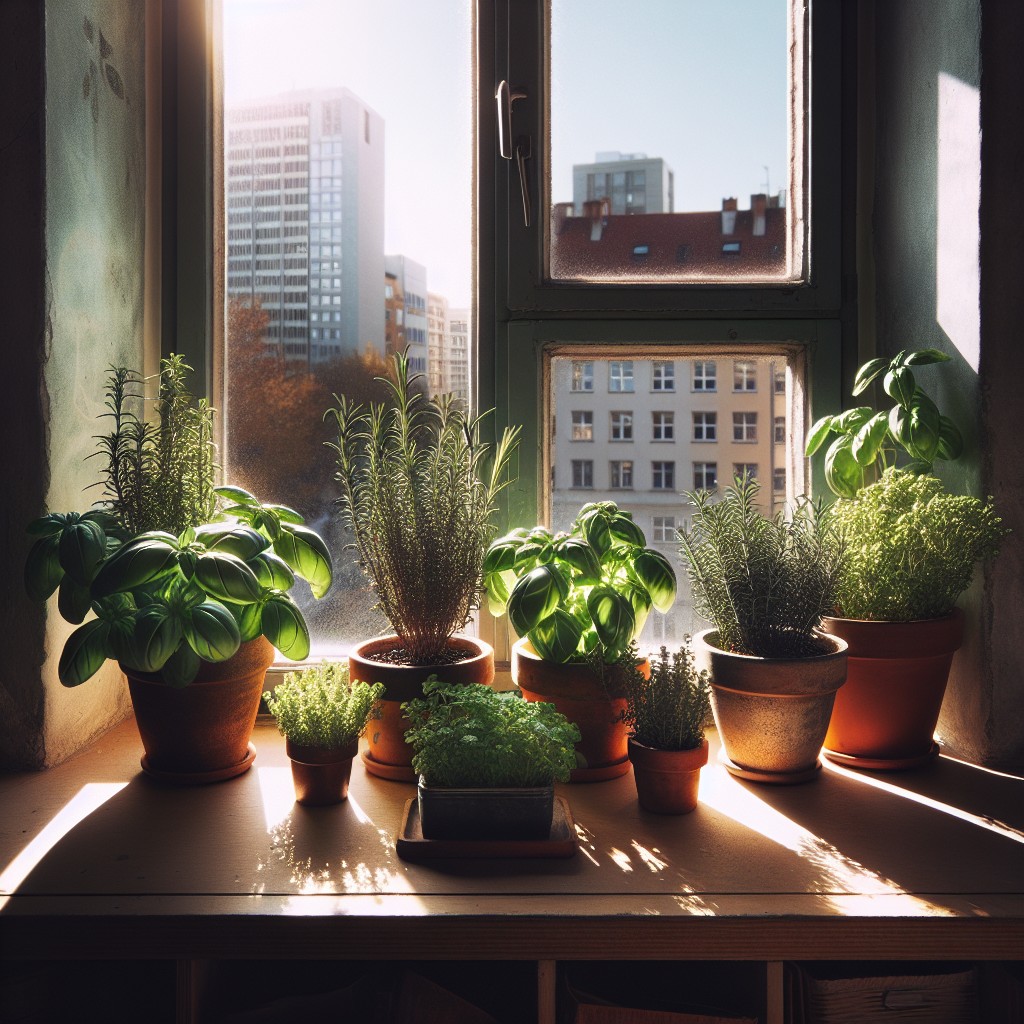
Select dwarf or miniature varieties of herbs such as compact oregano or thyme, which are well-suited to the spatial constraints of a windowsill.
Utilize stacking planters or tiered shelving to maximize vertical space, allowing you to cultivate a richer variety of herbs in a confined area.
Take advantage of trailing herbs like creeping rosemary or thyme to create a lush, green cascade that occupies minimal horizontal space.
Use of Aromatic Herbs for Fragrant Kitchen
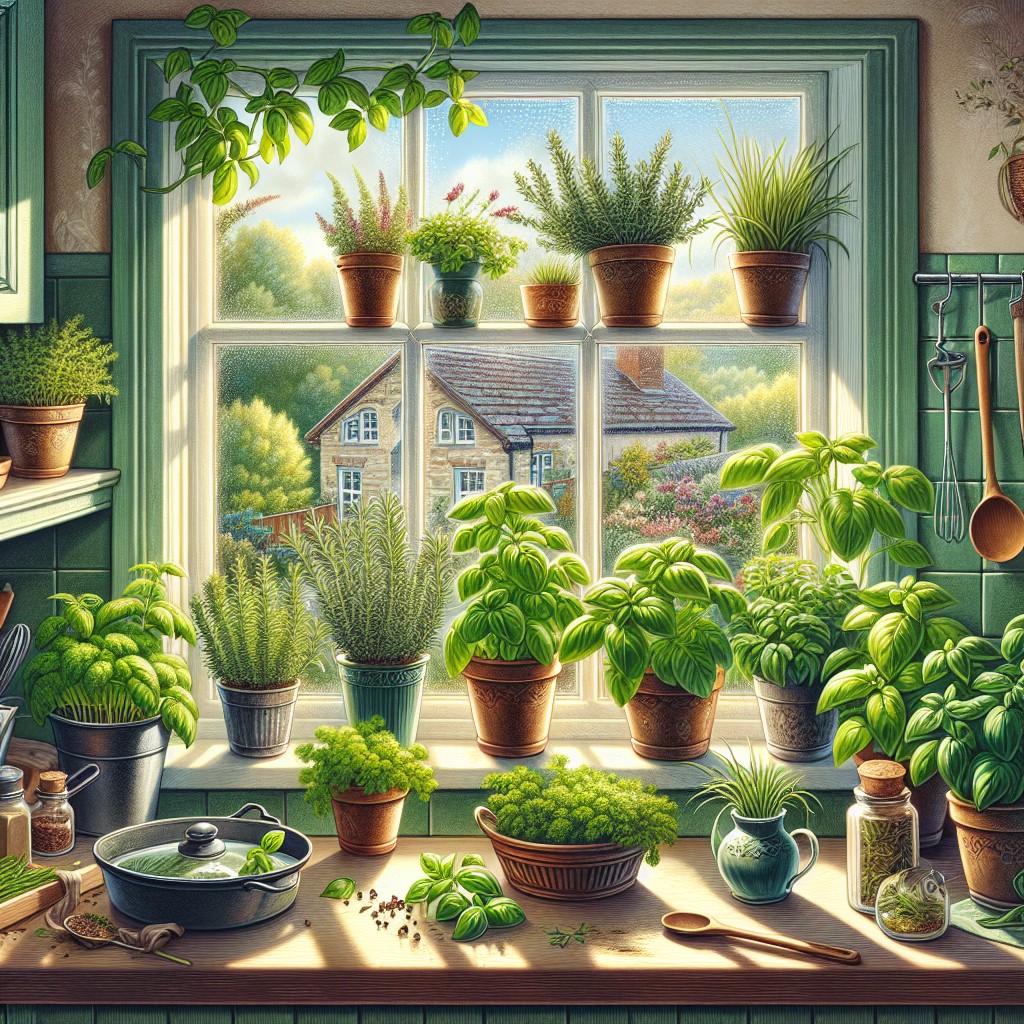
Cultivating aromatic herbs such as basil, mint, and lavender by your kitchen window acts as a natural air freshener, infusing the room with pleasant scents.
These fragrant plants not only enhance your culinary creations but also elevate the overall sensory experience of the kitchen environment.
Strategic placement of these herbs maximizes their aroma dispersion, subtly releasing their fragrance as the warmth from the kitchen activates their essential oils.
Creating A Beautiful Edible Windowsill Display
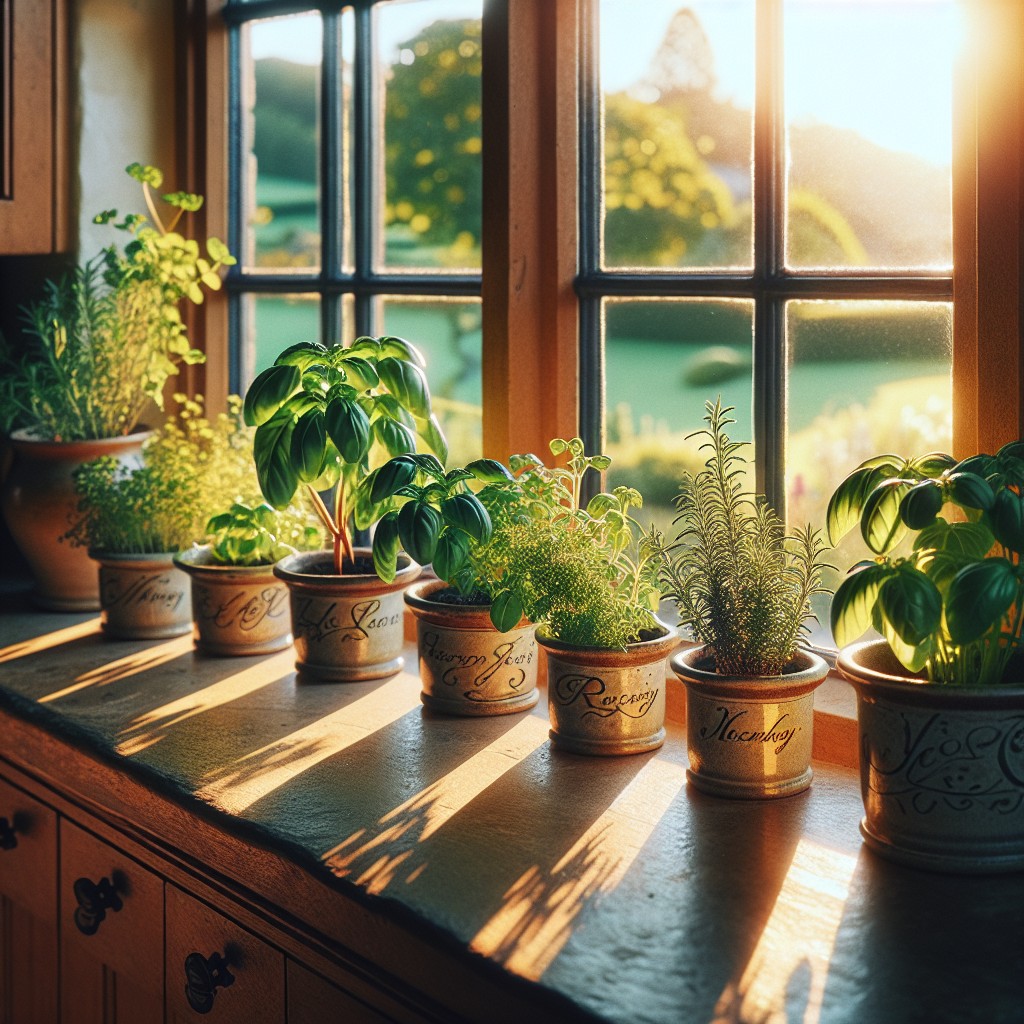
Select a harmonious mix of herb varieties for both visual appeal and culinary use, ensuring your kitchen window is not only a source of flavor but also a focal point of beauty.
Integrate foliage textures and colors, from the deep greens of basil to the silvery hues of sage, to create a tapestry of edible plants.
Assemble the herbs in coordinating containers that complement your kitchen’s decor, while allowing easy access for snipping fresh seasonings as you cook.
Incorporating Drip Irrigation System for Your Herb Garden
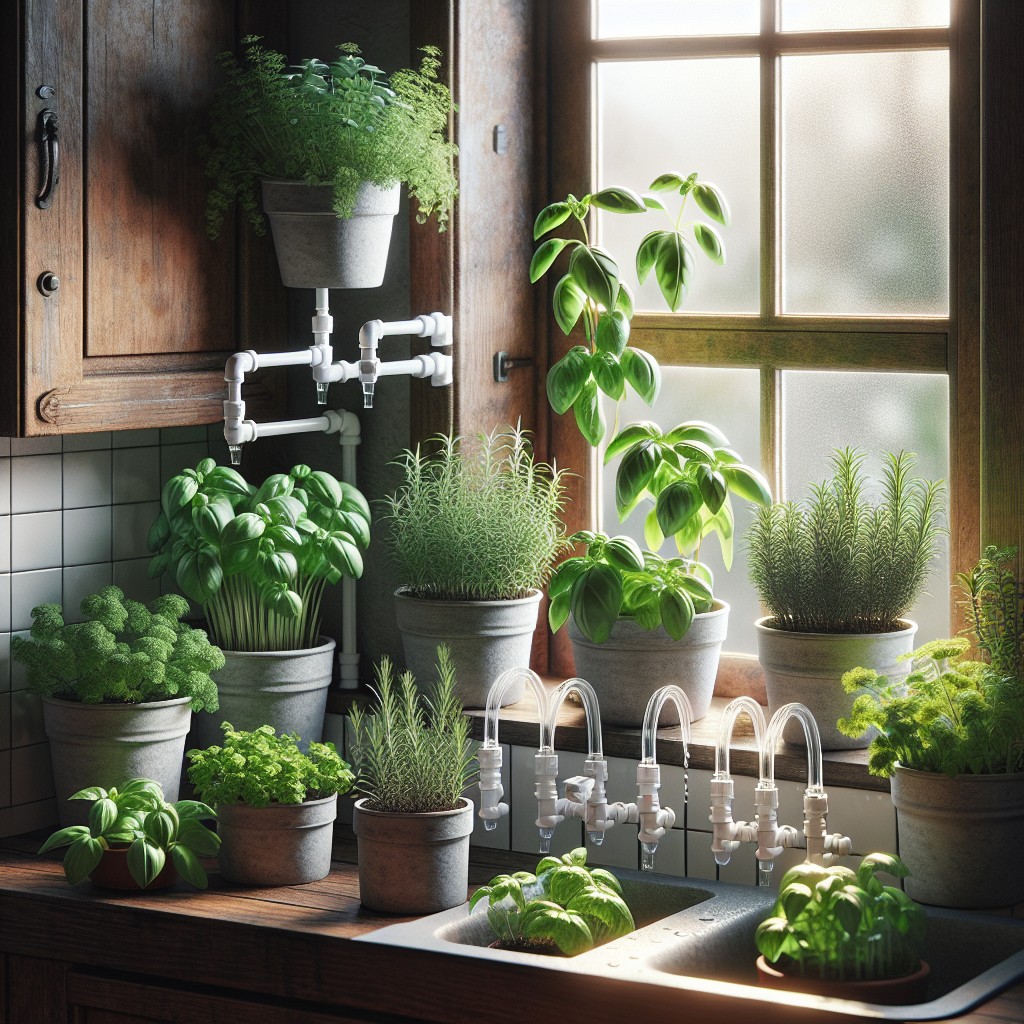
A drip irrigation system delivers a slow and steady supply of water directly to the root zone of each herb, ensuring consistent moisture. This setup is particularly useful for those who may not have the time to water their herbs daily. By automating the watering process, herbs thrive with minimal maintenance, making efficient use of water resources.
How to Rotate Your Herbs Seasonally
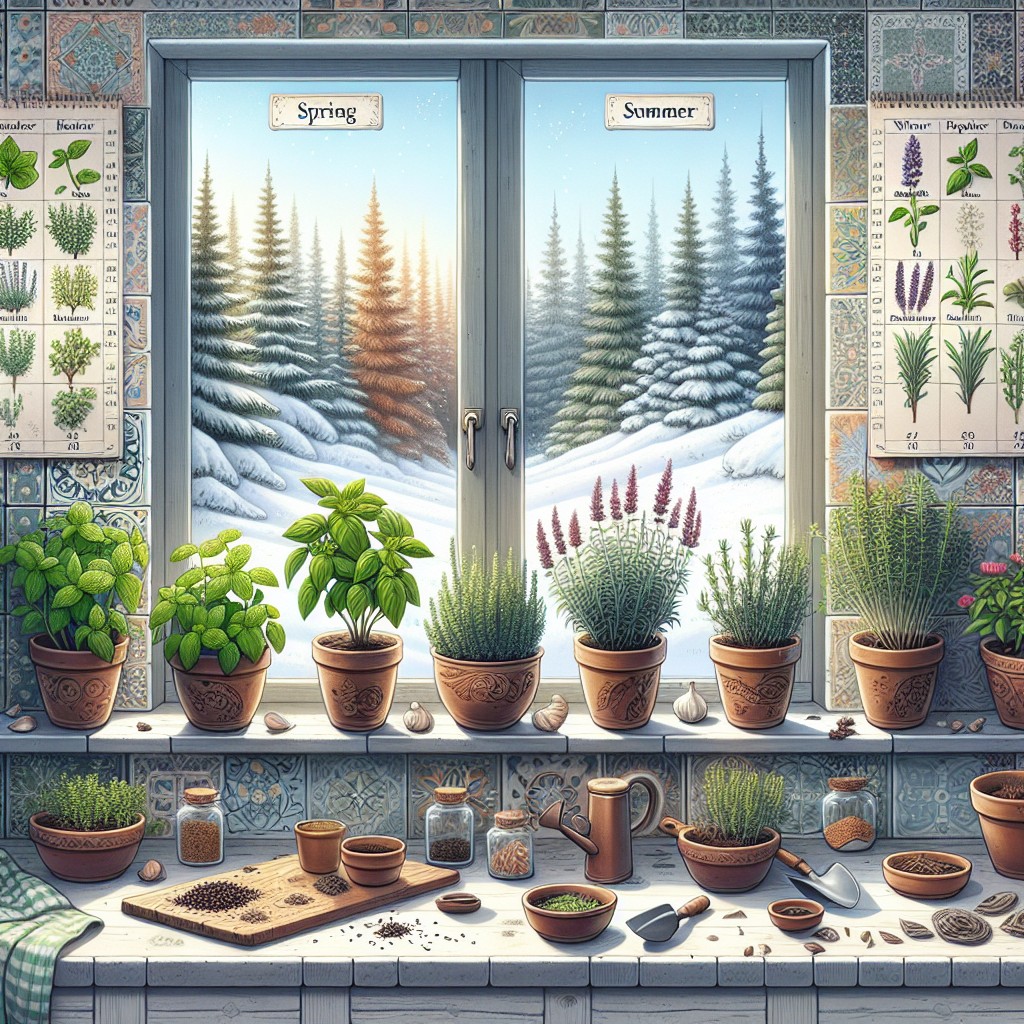
Rotating herbs seasonally ensures a year-round supply of fresh flavors by planting varieties best suited to the current climate conditions. This technique involves replacing heat-loving herbs like basil with cold-tolerant varieties such as chives and parsley as the weather cools. It maximizes window space efficiency and encourages gardeners to experiment with a diverse range of culinary herbs throughout the year.
The Advantage of Using Organic Soil for Your Herbs
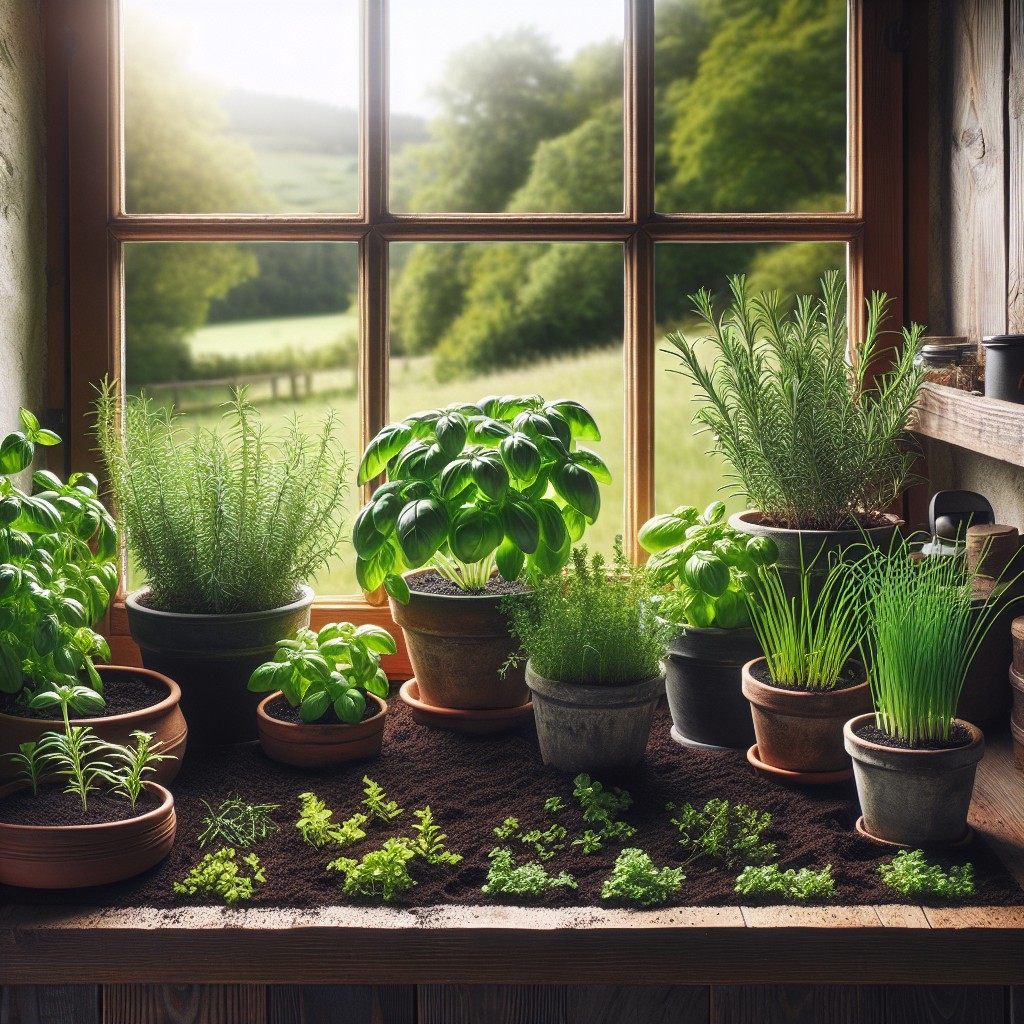
Organic soil enriches herbs with natural nutrients, enhancing their growth and flavor profile.
This soil type promotes a thriving micro-ecosystem, vital for the health of your kitchen window herb garden.
Moreover, it reduces the need for chemical fertilizers, ensuring your herbs are safe and environmentally friendly.
Growing Herbs Hydroponically in Your Kitchen Window
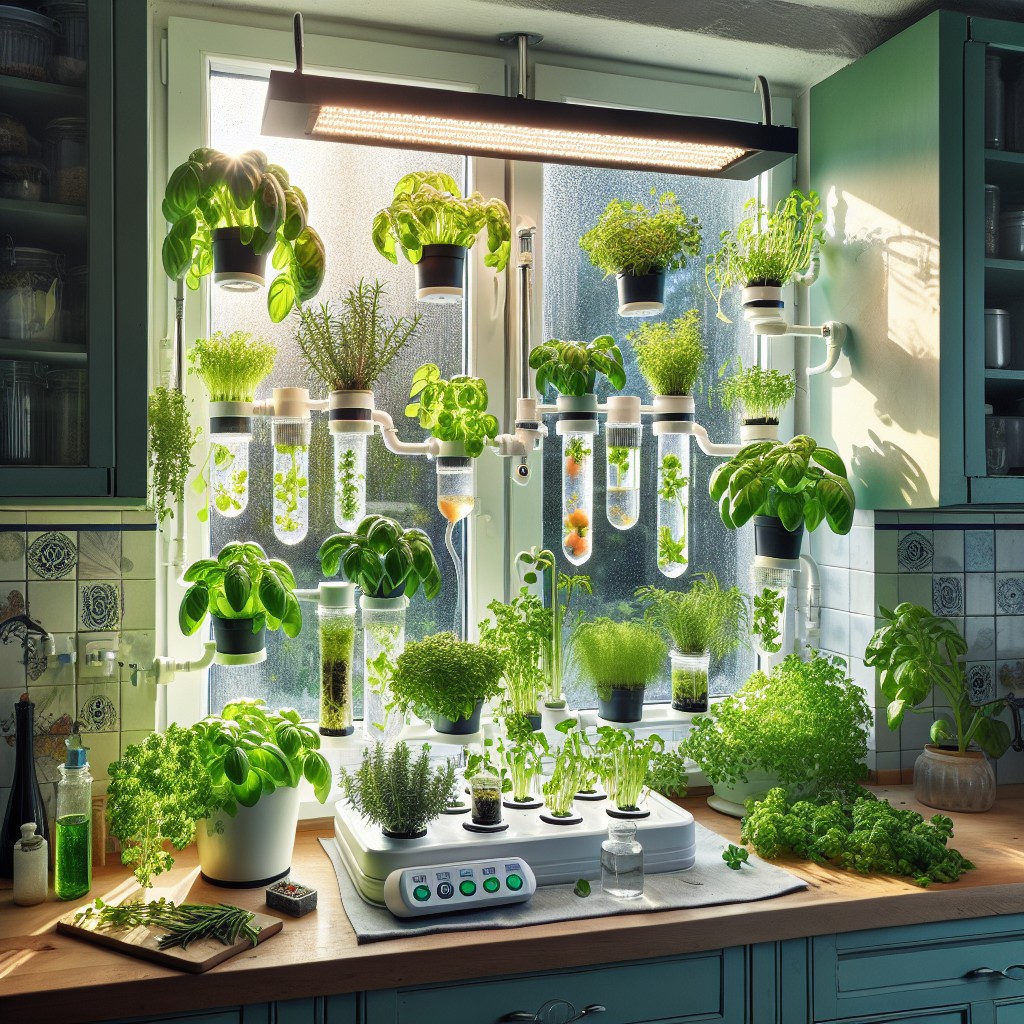
Hydroponic systems allow for soil-free herb cultivation, utilizing nutrient-rich water instead.
This method maximizes limited kitchen space and ensures consistent herb growth year-round.
With clear vessels, the hydroponic setup not only grows herbs efficiently but also adds a modern aesthetic to the kitchen window.
Using LED Grow Light for Herbs With Less Sunlight
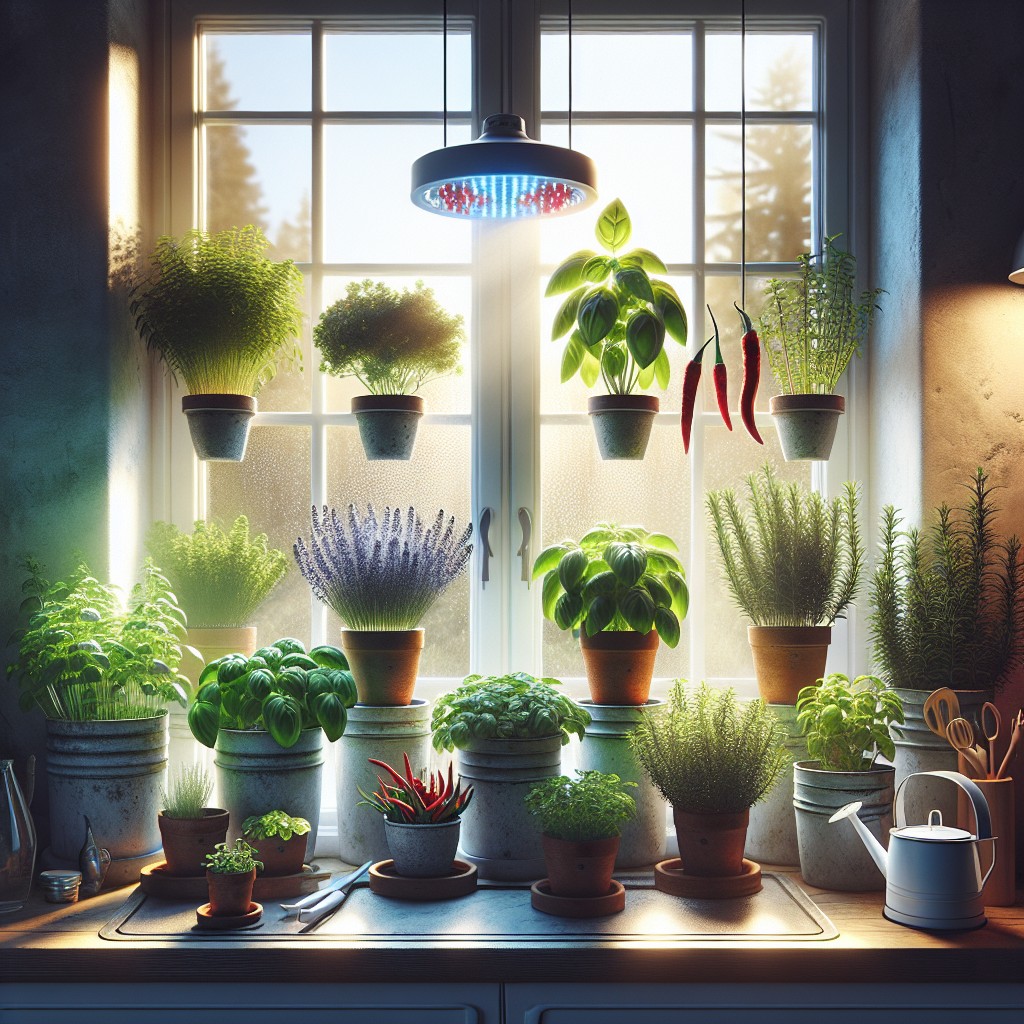
LED grow lights compensate for limited natural light, ensuring herbs receive the full spectrum of light needed for photosynthesis.
They are especially useful in north-facing kitchens or during overcast winter months.
The lights can be installed above the herb garden and timed to mimic the natural day cycle, promoting healthy plant growth.
Effectively Dealing With Pests in Indoor Herb Garden
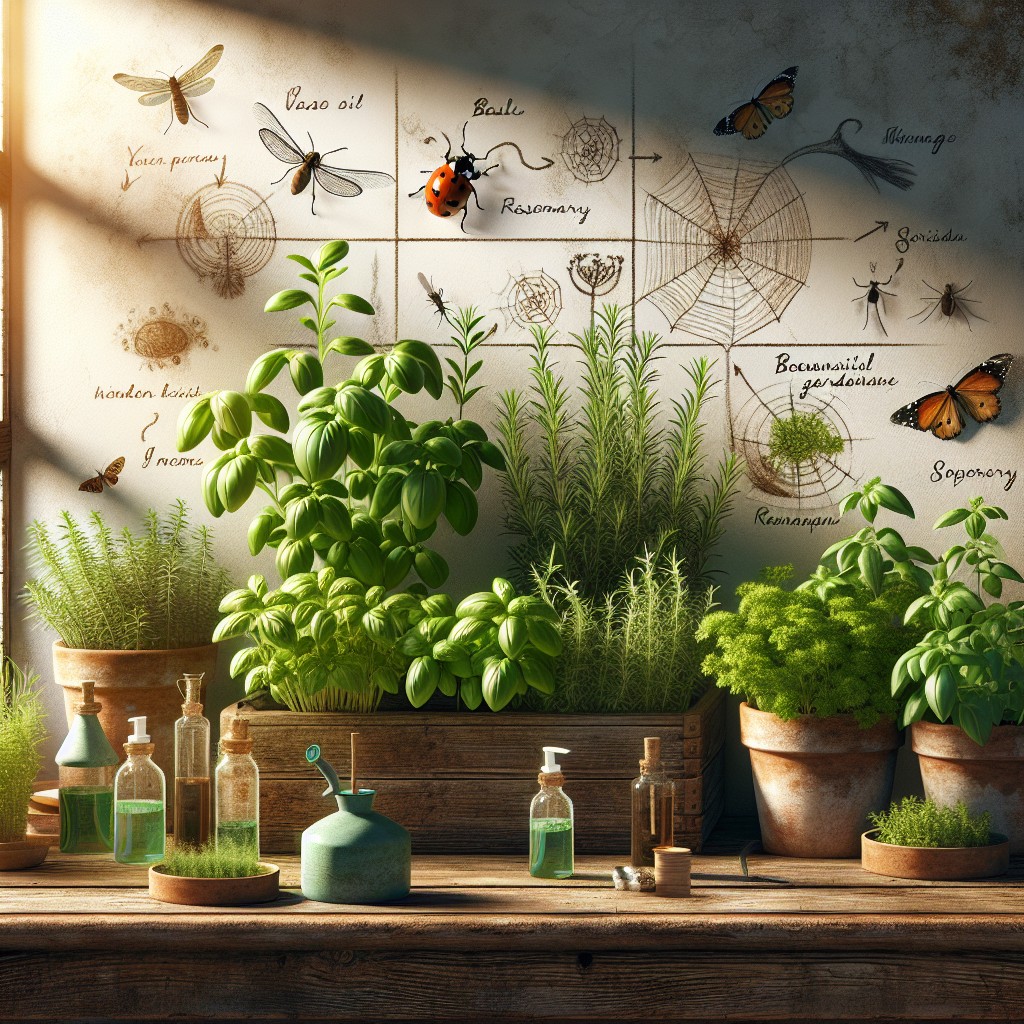
Monitor your kitchen window herb garden regularly to catch infestations early.
Introduce natural predators, such as ladybugs, to control pest populations without chemicals.
Employ non-toxic, homemade sprays using ingredients like neem oil, soap, and water to safeguard your herbs.
Ideas Elsewhere
- https://www.marthastewart.com/1537621/guide-growing-kitchen-windowsill-herbs
- https://www.the-herb-guide.com/herb-garden-for-kitchen-window.html
- https://www.reddit.com/r/BeginnerWoodWorking/comments/15qqk1e/new_shelves_for_kitchen_window_herb_garden/
- https://www.mydomaine.com/kitchen-window-herb-garden-5248619
- https://www.onsuttonplace.com/fresh-herbs-in-the-kitchen/
- https://heartfilledspaces.com/how-to-make-a-diy-indoor-herb-garden-kit-for-your-kitchen-window/
Recap
